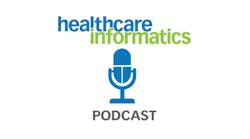At its Nov. 21 meeting, the Health IT Policy Committee’s Meaningful Use Work Group decided to give up on its efforts to develop recommendations for how electronic clinical quality measure concepts and specific measures could be used in place of meaningful use objective measures to “deem” eligible providers and eligible hospitals as meaningful users through their ability to perform on quality outcomes.
Paul Tang, M.D., the work group chair, opened the discussion of the deeming concept by mentioning several of the roadblocks they have run up against in earlier discussions. First, it requires quality measures focused on health IT-sensitive outcomes rather than processes, and many of those are still being developed. Plus, if CMS is going to reward high performance or improvement on measures, it would require benchmarks or track records.
Tang brought up the possibility of allowing providers to use existing HIT functionality to stratify populations and focus on improving care disparities among specific demographic groups.
But the work group could not reach agreement on how it would measure performance. Neil Calman, M.D., president and CEO of the Institute for Family Health, said the conversation raised the question of whether ONC should be in the job of measuring quality at all. “We are not the quality police,” he said. “We are trying to improve the functionality of systems by driving new requirements and capabilities of systems.” There are many other places and more emerging every day that require providers to achieve quality outcomes, he said. “You can’t even be part of those programs without these EHR systems. I don’t see us as the quality police. I don’t think that is the right objective for us.”
Work group co-chair George Hripsak, M.D., director of Medical Informatics Services at New York-Presbyterian Hospital/Columbia, said, “We have given this a couple of shots, but every version we come up with increases the burden and creates another meaningful use program. I recommend we don’t do deeming.” It would make things harder and put more pressure on vendors and providers, he said. David Bates, M.D., senior vice president for quality and safety and chief quality officer for both Brigham and Women’s Hospital, also recommended dropping it now.
In the end, the work group decided to close the door on the deeming concept for Stage 3, although it left the door open to reconsidering the concept in any future stages of meaningful use.

